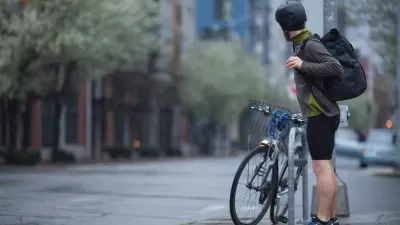The city released what it called a comprehensive review of its Vision Zero initiatives, but one critic argues the report doesn’t address some key opportunities for improving road safety.

The Urbanist’s Ryan Packer dissects the Seattle Department of Transportation (SDOT)’s recently released review of the city’s Vision Zero program. Although the city touted the report as a ‘top-to-bottom’ assessment, Packer argues that it only ‘skims the surface.’ In fact, “It focuses on a relatively narrow range of projects where the department was able to make progress on safety, and not on two larger categories: opportunities where safety improvements were ineffective, and opportunities where safety improvement were not included at all.”
“Despite all SDOT presentations starting with a rundown of the department’s vision and values, with safety near the top of the list, the report confirms many things stand in the way of safety improvements becoming fully embedded in everything that happens at the department.”
Packer details the report’s findings, which, for one, “offer a big opportunity for the general public to finally see what barriers exist to fully incorporating safety upgrades in the department’s daily work.” But Packer criticizes the report’s omission of unsuccessful projects and strategies, which could offer valuable lessons for the future.
Nevertheless, the report provides a “tidy list” of actions that SDOT may soon internalize, Packer hopes. The success of ‘rapid response’ interventions such as temporary bike lanes and safety improvements in the last year point to a way forward, if they can serve as models for broader action. Ultimately, Packer concludes, “any strategies are only going to be effective if local leaders allow SDOT to try bold things, and not reserve safety treatments to only the instances where there’s little pushback.”
FULL STORY: SDOT’s Top to Bottom Review of Vision Zero Barely Skims the Surface

Planetizen Federal Action Tracker
A weekly monitor of how Trump’s orders and actions are impacting planners and planning in America.

San Francisco's School District Spent $105M To Build Affordable Housing for Teachers — And That's Just the Beginning
SFUSD joins a growing list of school districts using their land holdings to address housing affordability challenges faced by their own employees.

The Tiny, Adorable $7,000 Car Turning Japan Onto EVs
The single seat Mibot charges from a regular plug as quickly as an iPad, and is about half the price of an average EV.

Seattle's Plan for Adopting Driverless Cars
Equity, safety, accessibility and affordability are front of mind as the city prepares for robotaxis and other autonomous vehicles.

As Trump Phases Out FEMA, Is It Time to Flee the Floodplains?
With less federal funding available for disaster relief efforts, the need to relocate at-risk communities is more urgent than ever.

With Protected Lanes, 460% More People Commute by Bike
For those needing more ammo, more data proving what we already knew is here.
Urban Design for Planners 1: Software Tools
This six-course series explores essential urban design concepts using open source software and equips planners with the tools they need to participate fully in the urban design process.
Planning for Universal Design
Learn the tools for implementing Universal Design in planning regulations.
Smith Gee Studio
City of Charlotte
City of Camden Redevelopment Agency
City of Astoria
Transportation Research & Education Center (TREC) at Portland State University
US High Speed Rail Association
City of Camden Redevelopment Agency
Municipality of Princeton (NJ)





























